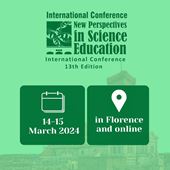Learning Interactions between Robots and Childs: New Frontiers in Future Schools?
Édgar Giovanni Rodríguez Cuberos, Fundación Universitaria Unimonserrate (Colombia)
Abstract
It's not a science fiction issue. Advances in artificial intelligence (A.I) and robotics determine what is already called the industrial revolution 4.0. In this context, several studies have suggested the need to explore and study the implications for increased exposure and naturalization of human-machine interaction with artificial intelligence (Human Robot Interaction). Various research institutions around the world, both public and private, are advancing rapidly in the integration of these new technologies using anthropomorphic models, emotional connections, facial interactions, haptic processes, intelligent tutoring system (ITS), among others. The cognitive possibility and the achievement of the singularity for these artificial intelligence has been suggested as a challenge and many experiments are conducted with the participation of children revealing the naturalness with which these technologies are internalized (Physical robots increase task compliance, Physical robots are more able to Maintain effective long-term relationships, Physical robots produces greater learning gains and so on). Robots with educational or care applications are increasingly common (Nano, Aibo, Kaspar, etc.) and are even marketed; however, the advancement of behavioral sciences and cognition have not established sufficient ethical, political, and Cultural partners for a next generation who will quickly learn in different ways in different social interactions, mediated by new phenomena and dynamics. Beyond ethical and security issues, the emergence of these devices raises serious questions about how children's interactions with smart toys may influence their perceptions of intelligence, cognitive development, and social behavior. For children and young people the new learning interfaces are an exercise in knowing how to teach and train new artificial intelligence. So, what is the role of teachers in this new paradigm? What should be taught? What new tensions characterize these borders? How can the teaching of science and technology be enriched or impoverished by these challenges? What types of societies are we setting up? Should we think of other types of schools and models of teaching? Is the HRI a new perspective for the teaching of science?
|
Keywords |
Artificial intelligence (AI), robotics, learning interactions, future child education, science education and robotics, Research on human–robot interaction (HRI) |
 New Perspectives in Science Education
New Perspectives in Science Education





























